TRANSITIO_MX02 on the streets of Mexico City
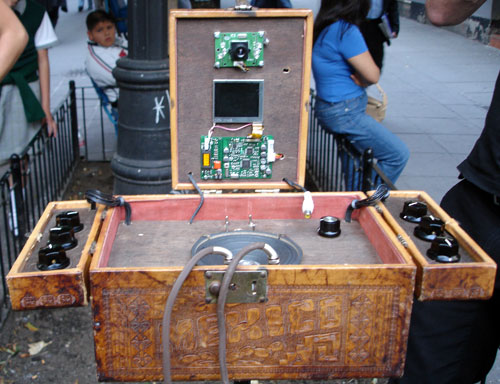
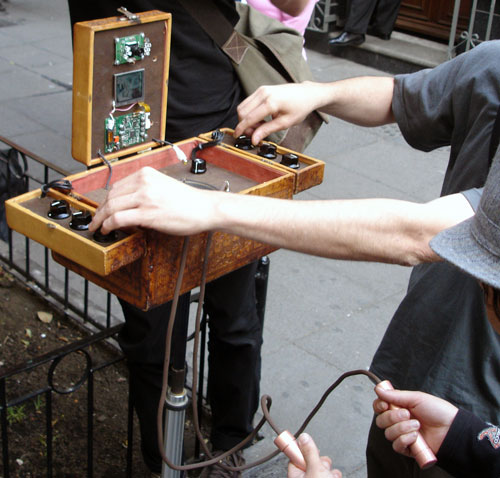
Arcangel Constantini has modified an old Mexican urban sport – “el toque” or touch – a late night practice of electrocution in order to continue drinking on festive nights. In some neighborhoods of Mexico City on Friday or Saturday nights, men walk around with a device that will give a customer an electric shock for 5 pesos. Arcangel has created his own device that beyond the means for electrocution also carries a video camera that captures the image of the participant while receiving electroshock as well as a speaker and a series of dials that allow Arcangel to modulate the level of electrocution and the sounds generated by the electricity. The touch is presented in a beautifully crafted box with very popular and traditional motifs.

TRANSITIO commissioned a new work from me, so I proposed “Carreta Nagua, siglo XXI.” Prior to arriving in Mexico City, I created a 9 minute animation in which two television super heroes originally created in the mid to late 60 and widely seen in Latin America discuss the effects of globalization, immigration and personal loss due to cultural transitions. The two characters are Chapulin Colorado, the comic super hero of the long running TV show Chespirito and Ultraman, the Japanese intergalactic alien super hero. The narrative is based on my parent’s move back to Nicaragua after 45 years of living in San Francisco, CA. As a passenger takes a ride in the rickshaw through the colonial park, Alameda Central in Mexico City’s historical center they watch the animation. The title Carreta Nagua is co-opted from the Nicaraguan folk tale in which a haunted cart is pulled by two skeletal oxen and driven by death. If the cart arrives at your home someone is to die. The tale was established by the indigenous people of Nicaragua who during the colonial period they were taken by the Spaniards on cart to work the mines. These people died in the mines and only reappeared as corpses carried on these same carts. The cart became a symbol of death to the indigenous people.
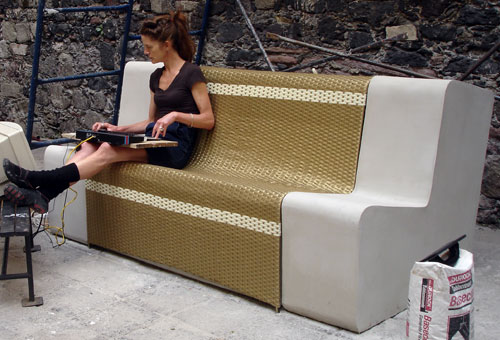
Kaffe Matthews famous for her sonic beds has constructed a sonic bench with an 8 channel sound system that travels through the bodies of those sitting upon the bench. From the bench eminates an excellent electronic composition that is relaxing while one’s body is massaged via the pulses of the speakers within the bench. Kaffe views the bench as an instrument that she invites others to compose pieces for the sonic bench.
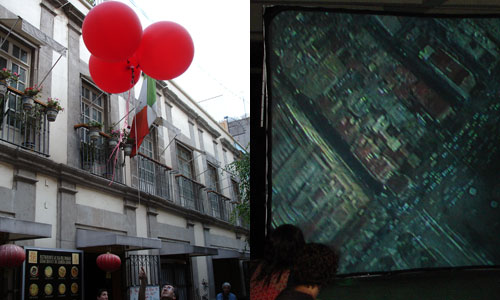
Gustavo Romano brought his “Pieza con globos Nro 2 y Nro3” to Mexico City in which large red balloons are released into the sky with a single channel video camera that captures the image of the city as the balloons fly away. The action was performed in the historic center next to a bar which screened the real-time image of the camera has it floated away. The piece is quite poetic as the people, streets, buildings and city grow smaller and smaller and yet more expansive.
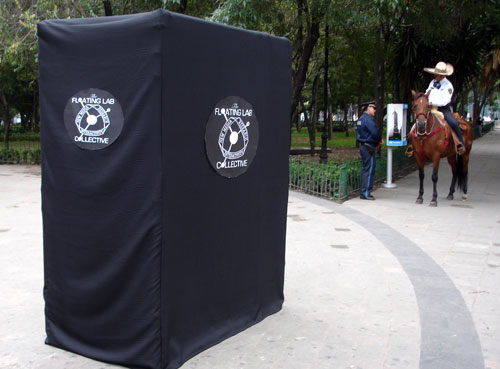
Floating Lab Collective set up video booths around town to record requests for protests as part of their “Protest on Demand” initiative. The protests collected in Mexico City were then enacted in Washington DC by participants and volunteers.
Fran Ilich set up an autonomous zone – “SubComandancia” in a trailer that was broadcasting via FM frequency and online as lectures, theater, discussions and panels were held within the space.
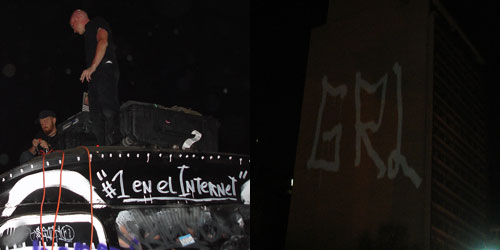
Graffiti Research Lab did a workshop for the Free Synthesis curatorial project in which they painted and decorated and old school bus, made LED throwies and then in the evening beamed laser graffiti onto the side of an abandoned building across Alameda Central.